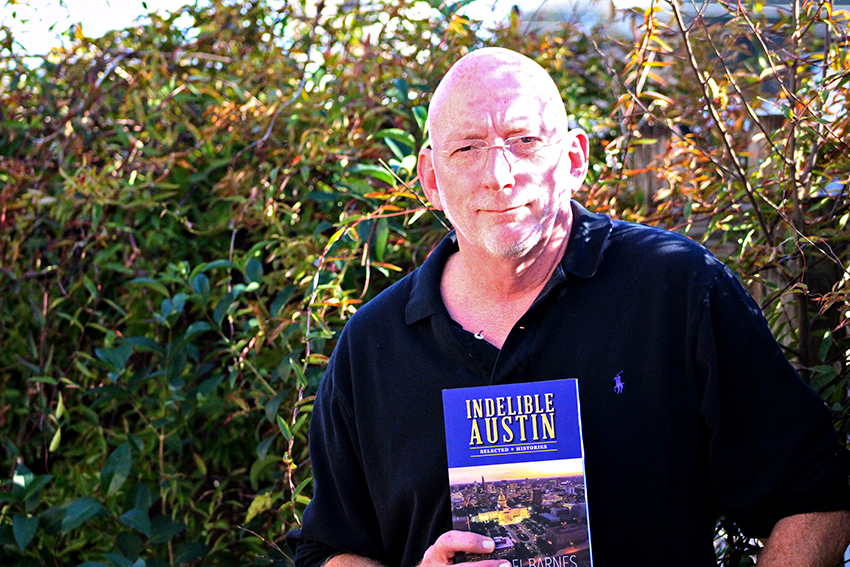Within a collective 50 years, father and son Buster and Jack Robinson avoided disastrous floods, disposed of an abandoned truckful of snakes and used the incessant train horn of the Zilker Zephyr as their morning alarm clock each day. As caretakers of Zilker Park, the family resided in an antique cottage concealed by the dense foliage in the heart of the park.
When UT alumnus Michael Barnes heard about the Robinson family legacy, he knew he had come across one of Austin’s many hidden treasures. As a reporter for the Austin American-Statesman, Barnes has written pieces about the city’s people, places, culture and history for the past 30 years. His new book, “Indelible Austin,” links historical accounts of the city to the people who reside in Austin today. Robinson’s family legacy is one of many anecdotes included in the book.
“Indelible Austin” is categorized into themes like “Park Gems”, “Our Neighborhoods” and “Old Austin Meets New Austin,” but instead of reciting textual histories, Barnes tells the life stories of the people and places involved in the book. He said he gets his inspiration from exploring the city block by block, and observing life from the ground level.
“I’m a walker,” Barnes said. “I let the city tell me its story. I look, listen, stop and talk to older people to ask them about what it’s like [to live] in Austin. When you’ve actually walked all the streets in the neighborhood and observed it carefully, then you can learn about the time [period].”
As a result, Barnes often finds stories that have previously gone untold. He met with Ima Warden, a 93-year-old Austin native who has lived on South 1st Street since 1932. Warden told Barnes she isn’t bothered by the noise and business from the restaurant Lenoir, her present-day neighbor, but she could recall her frustration when, years ago, the mailman’s horse would poop in her yard while the mailman delivered her letters.
Kim McKnight, the Austin Parks and Recreation planner, has worked with Barnes on several projects that have more to do with landmarks and the city’s parks, including his story on the Robinsons and the Haskell House in West Austin, a rare surviving example of a freeman’s home. Peter Tucker, a former slave, purchased the land and built the house in 1875. Eventually, the property was donated to the city and today exists as a museum. McKnight said this is just one example of the legacies Barnes detailed for the book.
“Rather than putting into print a story that’s been told dozens of times, [he] puts into print a story that’s not yet been told,” McKnight said. “Those [stories represent] some of the populations in our city that are underrepresented populations.”
Once Barnes began to tell these stories, it didn’t take long for him to build an audience. He said when his stories are published he receives feedback from his readers, who have additional links to the histories he has shared. The process has helped to develop the rich, Austin community.
“You’re always working on it and everyone’s helping,” Barnes said. “By the time the story is done, not only have you had all this help, but you have build an audience. They are, themselves, a part of the story then.”
UT alumnus Ben Sargent, a retired cartoonist for the Statesman, said even though Barnes’ stories are about people and places of the 1900s, they are still relevant today. Sargent said it’s important to put the city we know today in context, and to understand where it came from — especially in such a rapidly changing town. To him, he said, this is what makes the city home.
“For any kind of community — whether it’s a family, a community or a town — shared stories are the basis of the culture and the common memory,” Sargent said. “That’s what he’s brought together in his book for Austin. He has such a talent for letting people know what’s there all around them that they may not notice.”















